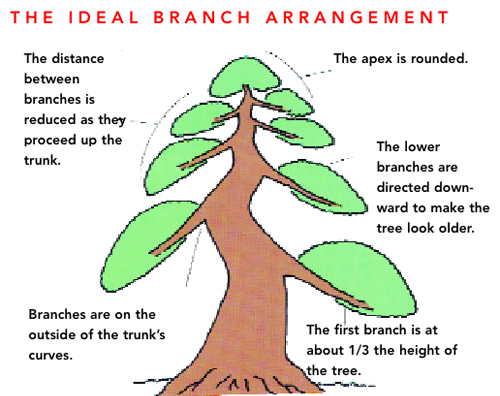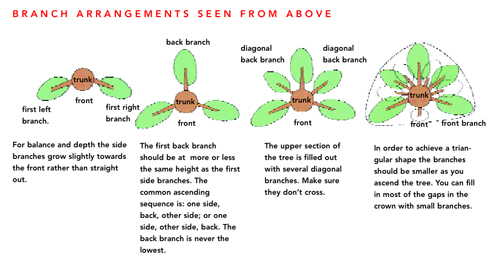
Both illustrations in this post are from Bonsai Today issue 92.
Learn the rules first, then break them
Though nothing is written in stone, understanding the basics can be very helpful. If the points shown here are not that familiar, you might want to take some time with each one. As you apply them, your bonsai will immediately improve. Once you get the basics, you can experiment with breaking the rules.
A little story to make a point
I’m told that when the first Westerns saw Japanese bonsai they (or at least some of them) thought there was some sort of magic involved. This is because they had no clue that there was method behind the art. Though we now understand that it’s not a matter of magic, still, most of us aren’t able to figure out what the basic secrets are until they are pointed out. Once you understand them, choosing quality stock and styling bonsai isn’t so daunting (going beyond the basics and styling truly creative bonsai is another story).

Can’t find your magnifying glass?
I realize that the text here is a little small, so I’ll repeat it (with some commentary and changes):
1. Left illustration: For balance and depth the side branches grow slightly towards the front rather than straight out.
2. Left middle: It says the first back branch should be at more or less the same height as the side branches. This is misleading. Normally you don’t want the lower branches to be too close together (see the illustration at the beginning of this post). A common ascending sequence is: first branch on one side, second branch (higher) on the other side, back branch (higher still). The back branch is never (never say never) the lowest.
3. Right middle: The upper section of the tree is filled out with several diagonal branches. They don’t all have to be diagonal; some could be in the front (only on the upper part of the tree, so the view of the lower trunk is not obscured), on the sides and in the back.
4. Right: In order to achiever a triangular shape (this hasn’t been discussed here and won’t be) the branches should be smaller as you ascend the tree. You can fill in most of the gaps near the top (the apex), with small branches.
Our Green Workshop posts are geared to relative beginners. Stay posted for more on branching basics and other Green Workshop topics, as well as a range of stuff for everyone else.